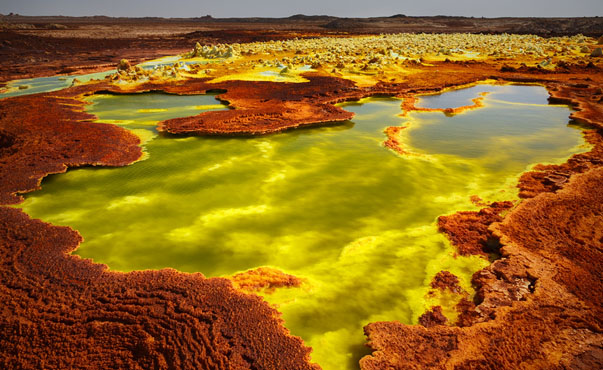Namaqualand
The spring flowers of the Cape West Coast, Cedarburg and Namaqualand within the Northern Cape have a worldwide name. This space of African country receives very little rain throughout the year however once the winter rains from might to July/August, the commonly dry landscape becomes a carpet of untamed flowers with spirited bands of gousblomme and vygies, similarly as nemesias, lachenalias, babiana and ixias. Guests won't feel they have any tips for flower viewing (how arduous will gazing flowers be?). However there's quite heap to contemplate if you'd adore to induce the foremost out of this expertise.

Mount Nyiragongo
Usually the main target of terribly pretty pictures or very cool eruption videos, the risks that volcanic rock lakes create isn't usually talked concerning. Once discussing the hazards related to these lava lakes, it's sometimes associated with one thing on the lines of: "don't go near" and "don't fall in." These lava lakes tend to be confined at intervals craters of volcanoes, and per se, direct hazards related to these lakes are confined to being in shut proximity with the lava lake. Hazards associated with these lava lakes, like at Ambrym, Vanuatu, or Kilauea, Hawai`i, tend to be hazards from eruptive activity, like ejection of materials (bombs, ash, etc.), or the emissions of toxic volcanic gas, like sulfur dioxide.

Underwater Waterfall, Mauritius
So firstly, we must always be up front and honest here and allow you to recognize it’s not truly a flowing falls beneath the ocean, however a spectacular optical phenomenon which will be explained by the Indian Ocean’s fascinating earth science history. Mauritius may be a comparatively immature island compared to a lot of the planet, and was shaped around eight million years past (to place that into context, Earth itself is five hundred times as previous - at around 4.6 billion years).

Volcanic activity beneath the ocean was the reason for the island’s formation alongside alternative islands like La Reunion Island. This cluster of islands currently sits upon what’s called a Submarine tableland or Ocean Shelf. This shelf isn't any deeper than a hundred and fifty meters below water level and is that the largest of its kind within the world. However, the ‘drop-off’ of this shelf’s edge plunges to depths of over 4000 meters into the abysm. The method you're witnessing in these unimaginable pictures isn't the water itself falling; however the sand from the gorgeous Mauritius beaches being forced offs the tableland by oceanic currents.






















